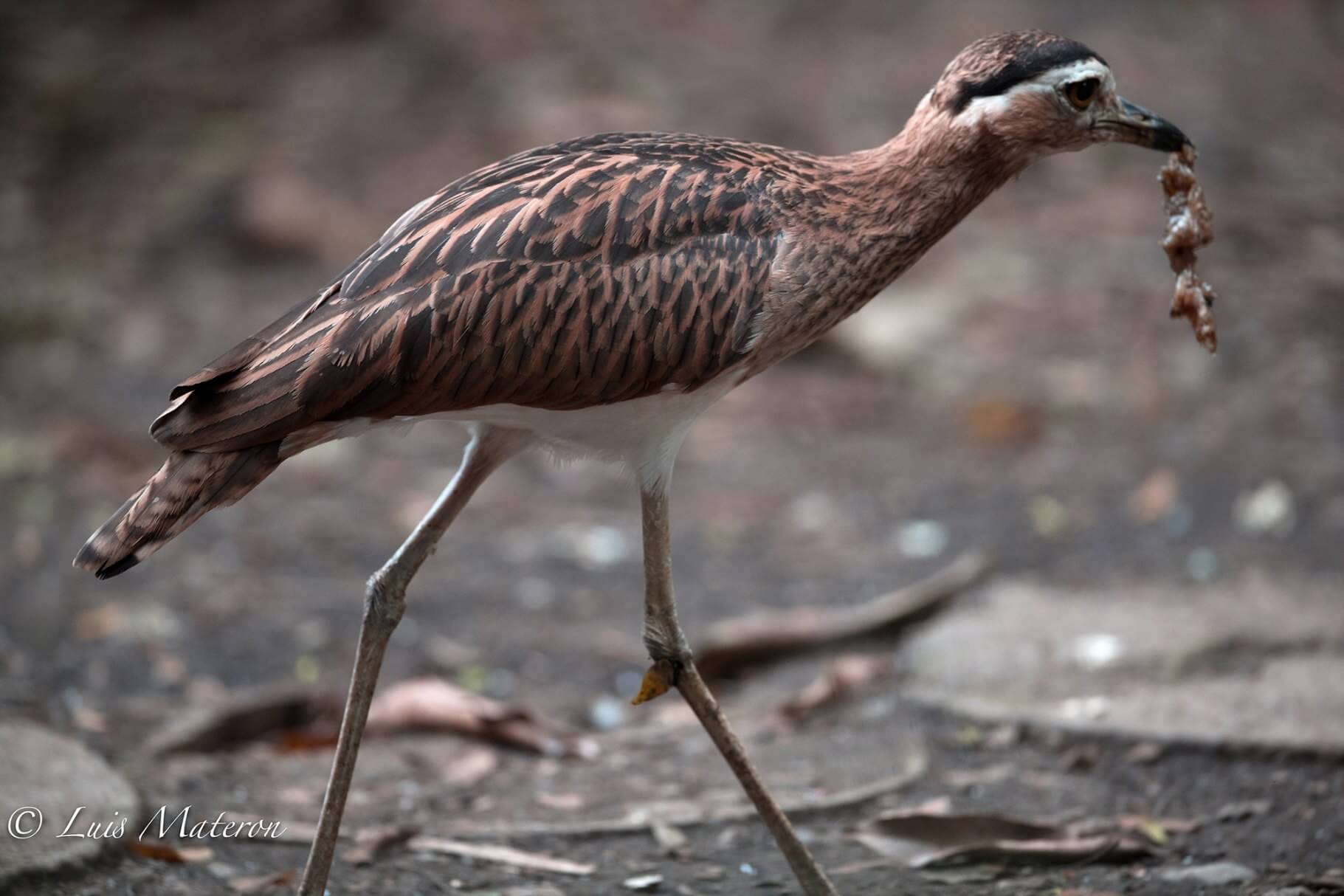Thick-knees
| Order: CHARADRIIFORMES - Family: BURHINIDAE |
| 10 Species currently existing - 1 in region |
Thick-knees, also known as stone-curlews or dikkops, are a group of medium to large wading birds belonging to the family Burhinidae. Here are some key points about thick-knees: Read in Spanish
Physical Characteristics: Thick-knees are named for their robust tarsi (lower legs) and large, prominent eyes, which give them a distinctive appearance. They have cryptic plumage that provides camouflage in their habitats, which are typically open landscapes such as grasslands, savannas, and scrublands. Thick-knees have long legs for walking and running and a strong, slightly curved bill for probing the ground for prey.
Habitat: Thick-knees are widely distributed across Africa, Eurasia, Australia, and the Americas. They prefer open habitats with sparse vegetation where they can easily spot prey and blend into their surroundings. Some species inhabit desert regions, while others are found in grasslands, wetlands, or agricultural areas.
Diet: Thick-knees are primarily nocturnal or crepuscular hunters, feeding on a variety of invertebrates such as insects, mollusks, crustaceans, and small reptiles. They detect prey using their keen eyesight and auditory senses, as they have excellent hearing capabilities.
Behavior: Thick-knees are known for their cryptic behavior, remaining motionless to avoid detection by predators during the day. They are also active at night, searching for food in the cover of darkness. Thick-knees are generally solitary or found in pairs, although some species form small family groups.
Reproduction: Thick-knees often lay their well-camouflaged eggs directly on the ground in a shallow scrape or depression. The mottled or speckled eggs blend in with the surrounding substrate, providing some protection from predators. Both parents share incubation duties and care for the offspring once they hatch.
Conservation: Some species of thick-knees are facing threats such as habitat loss, human disturbance, and predation by introduced species. Conservation efforts are focused on protecting their natural habitats, implementing sustainable land management practices, and raising awareness about the importance of these birds in ecosystems. Thick-knees are fascinating birds with unique characteristics and adaptations that allow them to thrive in diverse habitats around the world. Their cryptic nature, hunting strategies, and parental care behaviors make them an intriguing group of birds for birdwatchers and researchers interested in avian ecology and conservation.

Double-striped Thick-knee
Burhinus bistriatus
Spanish Name: Alcaraván Venezolano
Size: 18 in | 46 cm
Habitat: Arid scrub, dry grassland.
Height: <900 m
Photo: © Luis A. Materon

